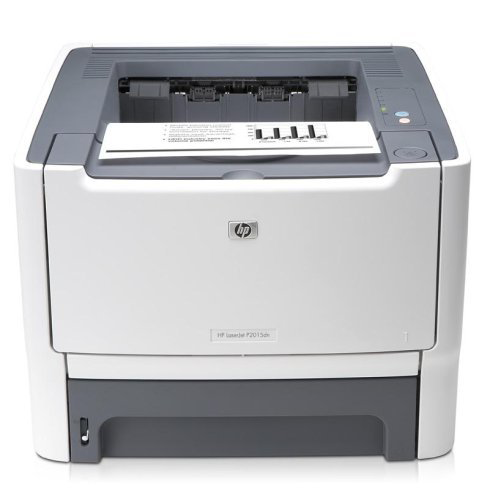Unraveling the Ink Mystery: What Do Laser Printers Use?
Introduction
In the world of home and office devices, printers stand as an essential tool. Whether you're a student rushing to print a report, an entrepreneur preparing a business proposal, or an office worker needing a hard copy of a document, printers play a crucial role in our daily lives. But have you ever stopped to think about what makes a printer - especially a laser printer - work? So, buckle up and get ready to unravel the ink mystery of laser printers.
What is a Laser Printer?
A laser printer is more than a standard household gadget. It has evolved into an essential tool renowned for its speed, precision, and cost-effectiveness. Here's an enhanced breakdown of what a laser printer is:
- Source of High Quality: Laser printers are celebrated for their ability to produce outstandingly high-quality text and graphics. It manages to effectively transmit the fine details and contours of various illustrations and fonts, delivering quality prints each time.
- Speed & Precision: You don't have to wait for ages to get your documents printed anymore! Laser printers are famed for their fast printing speed. Not just quick, they maintain precision in each print, making them more efficient than most counterparts.
- Affordability: While the upfront price might be more than an inkjet printer, laser printers prove to be an economical investment in the long run. With lower per-page printing cost, they are a more affordable option for high-volume printing.
- Not Really 'Ink': Straying from traditional operations, laser printers do not employ liquid ink. The unique 'toner' employed contributes significantly to the performance and quality of output.
Remember, knowing your printer goes a long way in utilizing it to its maximum capacity. So, dive into this remarkable technology and marvel at the laser printer's efficient performance!
How Does a Laser Printer Work?
A laser printer operates using a precise, efficient mechanism that involves several steps:
- Step 1: Charging the Drum: Initially, the high voltage wire electrifies the drum, preparing it for the incoming laser beam.
- Step 2: Creating an Image: The printer’s embedded laser device sketches an electrostatic image on the electrified drum.
- Step 3: Attracting Toner: Post this, the drum's charged areas magnetically pull the toner particles, forming the basic structure of the printout.
- Step 4: Fusing the Toner: In this key step, a heated roller called a fuser melts and affixes the toner onto a sheet of paper, which then takes the course of gravity or a conveyor belt.
- Step 5: Ejecting the Paper: The completed printout is then ejected, presenting a high-quality copy of the required text or image.
- Step 6: Cleaning: Finally, any residual toner is eliminated from the drum, preparing it for the subsequent print cycle.
Understanding these steps gives insight into the high-speed, precise functionality of the laser printer, underlining why it remains a favored choice for high volume printing needs.
What Kind of 'Ink' Do Laser Printers Use?
Laser printers defy the conventional perception of printers by eschewing the usage of ‘ink’. Rather, they employ an entirely different substance: toner. But what exactly is this toner?
- Toner Composition: Unlike traditional ink, toner is a powdered substance. It comprises polyester – a type of plastic – and incorporates pigments and compounds to create colour. Essentially, it's the application of these tiny plastic particles which gives life to your prints.
- Toner Cartridges: The toner is stored within cartridges inside the printer. These cartridges are often available in four distinct colours:
1. Black
2. Cyan
3. Magenta
4. Yellow
Each of these colours plays a crucial role in combining to produce the broad spectrum of colours evident in the final printout.
- Toner Application: The application of the toner in the printing process is guided by the laser in the printer. This laser designs an electrostatic template of the document or image to be printed on a drum. The toner particles get attracted to the charged areas on the drum, forming the layout of the print. Subsequently, these particles are fused onto a paper sheet using heat. Thus, your document or image is successfully printed.
In essence, the 'ink' used by laser printers is far removed from the ink we're familiar with. The toner’s powdered form and its method of application confer certain advantages to laser printers, such as higher precision and resistance to smudging. These unique characteristics make toner a defining component in the "ink mystery" of laser printers. The role of toner in these printers showcases the innovative blend of chemistry and technology in modern printing practices.
How is Toner Different from Standard Printer Ink?
Toner and ink are two unique substances used in the world of printing, each having their signature characteristics. Renowned for use in laser printers, toner is very different from the standard printer ink found in inkjet printers. Let's delve into the key distinctions:
1. Composition: Traditional printer ink is a liquid solution combined with color pigments. In contrast, toner is a dry powder substance consisting of tiny plastic particles combined with color compounds.
2. Application: Traditional ink operates by being sprayed onto a paper, allowing the paper fibers to absorb it. Conversely, toner works when a printer's heating element, known as a fuser, warms the toner particles, causing them to bond with the paper surface.
3. Appearance: One of the striking differences that toner offers is sharper and clearer images in comparison with ink. This is because the liquid ink is absorbed by the paper, often spreading slightly, while the toner particles form a fine layer on top of the paper.
4. Longevity: Unlike traditional printer ink that may dry out when unused, toner's risk of drying out is minimal, making it more suitable for printers that aren't frequently used.

5. Resistance: Prints made from toner particles are less susceptible to smudging and water damage. The melted plastic in the toner forms a layer on the paper that is resilient to moisture.
In conclusion, the differences between toner and ink significantly affect the productivity, longevity, and quality of printers. Understanding these differences can guide one to make an informed decision on what best suits their printing needs.
Why Choose Laser Printers and Toner Over Their Inkjet Counterparts?
Choosing between laser printers with toner and inkjet printers hinges on individual preferences and requirements. However, let's break down some compelling reasons that make laser printers with toner a preferred choice for many:
1. High-speed Printing: Speed is of the essence in today's fast-paced world, and laser printers excel in this area. They are engineered to deliver quick, efficient printing, particularly for bulk tasks. Laser printers can deliver up to 100 monochrome pages per minute, whereas inkjets typically max out at around 10-20 pages per minute.
2. Superior Quality: Laser printers leverage toner technology to produce sharp, high-quality text and clear images. The precision of a laser, coupled with the ability of toner particles to provide crisp outlines, result in professional-grade printouts.
3. Cost-effectiveness: Although laser printers and toner cartridges present a higher upfront cost, they prove cost-efficient in the long run. A toner cartridge prints more pages than an inkjet cartridge, translating to a lower cost per page. For instance, a mono laser toner cartridge can yield up to 2,500-10,000 pages, while an inkjet cartridge yields about 500 pages.
4. Durability of Prints: Thanks to toners, printouts from laser printers are resistant to smudging and water damage. The heat-fusion process ensures that the toner adheres securely to the paper, creating durable prints that last longer.
5. Low Maintenance: Laser printers are known to be more reliable and require less maintenance than their inkjet counterparts. The toner inside a laser printer's cartridge is a dry powder that doesn't dry out or clog as ink does in inkjet printers.

While the decision between a laser printer and inkjet printer depends on your specific printing needs, understanding these advantages can help steer you towards the right device.
Conclusion
Laser printers and the toners they use, certainly have their unique advantages, which make them popular in homes and offices. By understanding the science and technology behind them, you can make an informed decision about the best printing solution for your specific needs.
Related FAQs about what ink do laser printers use
Is the toner used in laser printers harmful to health?
Toner used in laser printers is generally not harmful to health. There may be a minor risk of respiratory irritation if one is exposed to large amounts of toner dust, which is rare under normal conditions. However, it's always advisable to handle toner cartridges with care and limit direct exposure.
Why doesn't a laser printer use standard ink like an inkjet printer does?
Laser printers use toner instead of standard ink because it results in precise, clear, and high-quality prints. The toner's powder format allows it to be fused onto paper by heat, making the printed content more resistant to smudging and water damage compared to standard ink.
How economical is it to use a laser printer and toner compared to an inkjet printer and regular ink?
While laser printers and toner may have higher upfront costs, they are generally more economical in the long run. They offer lower per-page cost, making them ideal for high-volume printing. Additionally, the durability and low maintenance of laser printers add to their cost efficiency.


